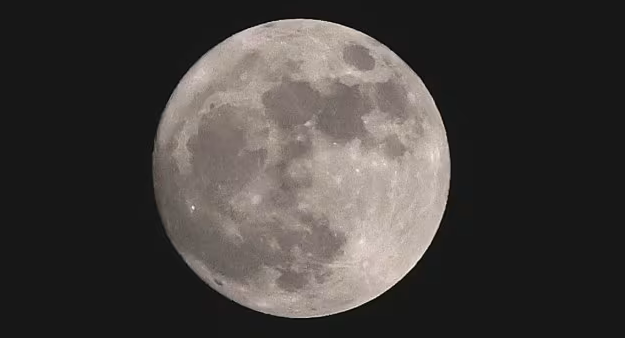2:15 PM | *Rare super blue moon tonight and - as an added bonus - Saturn will be visible above the upper part*
Paul Dorian
When the sun goes down tonight, go outside and look to the east. The moon will be full for the second time this month meaning this will be considered a blue moon. Typically, full moons occur every 29 days, while most months in our calendar last 30 or 31 days, so the months and moon phases don’t always align. This results in a blue moon about every 2.5 years with the last one occurring in August 2021. The full moon will actually reach a peak at 9:36 p.m. ET on the evening of August 30, but will appear full through Friday morning, according to NASA.
In addition to being a blue moon, this full moon can be considered a supermoon. Definitions of a supermoon can vary, but the term generally denotes a full moon that is closer to Earth than normal and thus appears larger by about 14% than a normal full moon and also brighter in the night sky. The moon will be 222,043 miles (357,344 kilometers) away from Earth, nearly 18,000 miles (28,968 kilometers) closer than its average distance. The supermoon may have played a role with the landfalling Hurricane Idalia this morning along Florida’s Gulf coast as it enhances tides and worsens storm surge perhaps by a foot or so. Because of the supermoon’s proximity to Earth, its gravity has a stronger effect on the oceans.
According to NASA, spotting a blue moon or super moon is relatively common a few times each year, whereas, a super blue moon, where both phenomena coincide, only happens roughly once in a decade. The subsequent super blue moon is not anticipated until January 2037, underscoring the significance of this upcoming event.
And as an added bonus for sky viewers, Saturn will become visible tonight above the upper part of the rare super blue moon. In fact, the ringed planet will be making its closest and brightest appearance of the year near the moon. At the end of evening twilight on Wednesday, August 30th, around 8:42 p.m. ET, the bright glow of Saturn will appear about 5 degrees to the upper right of the moon. Over the course of the evening, Saturn will appear to move clockwise around the moon, according to NASA. At their closest, the two will appear to be about the width of four full moons apart. During the close approach of the moon to Saturn, the two may be too widely separated to be viewed together with the narrow field of view of the typical backyard telescope, but should be tight enough to be viewed together with binoculars.
Meteorologist Paul Dorian
Arcfield
arcfieldweather.com
Follow us on Facebook, Twitter, YouTube


